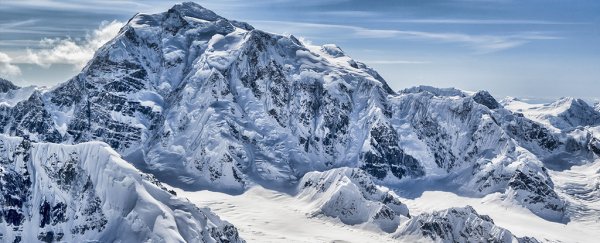Denali National Park in Alaska is home to North America's highest peak, attracting long queues of humans who are keen to commune with nature.
Unfortunately, nature's call doesn't always align with convenient amenities, and decades of toilet breaks have added up. Now hiking companies are making it their business to fix the peak's poo problem.
According to the National Park Service (NPS), six of the seven guide companies contracted to take tourists hiking up Denali's trails have volunteered to enforce new waste management practices.
In generations gone by, the occasional hikers daring to push their way up the icy terrain of Denali's West Buttress climbing route each year would leave their excrement wherever they pleased.
By the late 1970s park rangers needed to accommodate increasing numbers of climbers by digging latrines into the glacial ice near crowded stopping points, covering the three to four metre (10 foot) hole with a plywood outhouse.
At the end of the climbing season, the outhouse would be taken down and the hole filled in, leaving a Morse code of poopsicles on a conveyer-belt slowly grinding its way towards the ocean.
We're not talking a few small tubes of number two either. A whopping 66 metric tons of the stuff has accumulated in Kahiltna Glacier's ice over the decades, and with it a trove of parasites, pathogens and two-ply paper destined for Alaska's coast.
The first steps towards improving sanitation took place in 2001, when the NPS worked with the American Alpine Club to pilot a program featuring a personal transportable toilet called the Clean Mountain Can.
It was a success … of sorts.
More than 500 climbers used the can over the following years, reducing contamination near one of the more disgusting campsites enough to show the program's merit.
These days, every climber is handed a can on arrival and expected to use it. The lightweight toilet is good for around 12 uses and weighs up to 7 kilograms (about 15 pounds) when full.
Since it can take a few weeks to trek up and back, park rangers admit they can't expect walkers to carry an entire trip's worth of waste the entire way.
So they compromised. At 4,300 metres (14,200 feet), hikers could drop their 'excess baggage' into a single sign-posted crevasse.
The Clean Mountain Can program has made a marked improvement cleaning up the glacier's surface and forms a key role in the park's waste management program.
Now all but one of the park's contracted hiking companies are stepping up of their own accord to make their clients carry all of their waste the entire way.
The companies cover around half of all climbers making their way up Dinali's flanks, so it should make a significant impact on the park's sanitation.
That's news worth celebrating. But Kahiltna glacier is still steaming ahead with its cargo of caca, and with global warming jamming its finger on the fast forward button, the thaw will be a relatively quick one.
"We have lost more glacier cover in the Alaskan national parks than there is area in the whole state of Rhode Island," National Park Service glaciologist Michael Loso recently told Elizabeth Weise at USA Today.
"One of the consequences of warming temperatures is that the surface of the glacier is melting more quickly."
Loso is something of an expert on Dinali's faecal issue. For years he's been studying the slow crawl of tourist waste as it makes a 28 kilometre journey from snow-capped mountain to blue sea.
Since those first toilets were dug nearly half a century ago, waste from the lowest camps could start appearing at the end of the glacier any year now. Not that anybody is looking too closely.
"We don't choose to spend our limited funding to just hunt for it all summer long," says Loso.
It won't exactly be a tidal wave of excrement, but the deposits of faecal bacteria and potential communicable diseases peppering the ice will more than likely be biologically active, making for a potential hazard for the centuries it takes to clear.
Once considered remote destinations a few hardy travellers would dare tackle, frontiers like Denali are now attracting long queues of tourists desperate to test their mettle in the ice-covered wilderness.
The Alaskan national park isn't the only one dealing with human waste. Everest is also under threat from droves of tourists leaving more than footprints behind on its slopes.
If we want future generations to share the luxury of hiking through a pristine environment, hiking companies should take note. Not to mention a bunch of Clean Mountain Cans.
